Three Veterans
This Memorial Day weekend, I’d like to highlight three Civil War veterans interred here in Galveston. I don’t have a familial or personal connection to any of them, but I think of them as neighbors of mine, of a sort.


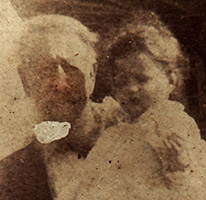 Charles DeWitt Anderson (1827-1901) served as a Colonel in the Confederate army, and in the summer of 1864 was charged with the defense of Fort Gaines, on the eastern side of the entrance to Mobile Bay. After Admiral Farragut forced the entrance to Mobile Bay on August 4, Anderson found himself entirely cut off, besieged and under artillery fire from the land side of Dauphin Island and unable to have any effect on the Federal fleet, which had moved farther up Mobile Bay, out of range of Fort Gaines’ guns. Faced with demoralized Confederate troops inside the fort, Anderson surrendered on August 8. Given a choice of surrendering to the U.S. Army or Navy, Anderson turned over his sword to Farragut. One of Farragut’s last acts before he died in 1870 was to request that Anderson’s sword be returned to him. It came back to Anderson with the inscription, “Returned to Colonel C. D. Anderson by Admiral Farragut for his Gallant Defence of Fort Gaines, April 8, 1864.”
Charles DeWitt Anderson (1827-1901) served as a Colonel in the Confederate army, and in the summer of 1864 was charged with the defense of Fort Gaines, on the eastern side of the entrance to Mobile Bay. After Admiral Farragut forced the entrance to Mobile Bay on August 4, Anderson found himself entirely cut off, besieged and under artillery fire from the land side of Dauphin Island and unable to have any effect on the Federal fleet, which had moved farther up Mobile Bay, out of range of Fort Gaines’ guns. Faced with demoralized Confederate troops inside the fort, Anderson surrendered on August 8. Given a choice of surrendering to the U.S. Army or Navy, Anderson turned over his sword to Farragut. One of Farragut’s last acts before he died in 1870 was to request that Anderson’s sword be returned to him. It came back to Anderson with the inscription, “Returned to Colonel C. D. Anderson by Admiral Farragut for his Gallant Defence of Fort Gaines, April 8, 1864.”
What fewer people know about Anderson is that he and his younger brother arrived in Texas as orphans, their parents having died on the ship en route to the Republic of Texas in 1839. They were adopted right there on the wharf by an Episcopal minster. In 1846, Anderson was the first cadet admitted to West Point from the newly-established State of Texas; his application letter was endorsed by U.S. Senator Sam Houston. Although Anderson did not graduate from the Point, he eventually received a direct commission into the Fourth U.S. Artillery in 1856, and served until resigning his commission in 1861. Anderson served longer as a U.S. Army officer than as a Confederate one; you can view a detail of an 1859 map drawn by Anderson of the area around Fort Randall, Dakota Territory, here.
In his postwar years he worked as an engineer on a variety of public works projects, and at the time of his death was serving as the keeper of the Fort Point Lighthouse here. William Thiesen, the Atlantic Area Historian for the U.S. Coast Guard, recently wrote about Anderson’s experience at Fort Point during the 1900 Storm, the deadliest natural disaster in U.S. history. Recall that, at the time, Anderson was in his seventies:
True to his mission, Anderson kept the light burning during the storm even though most ships by then were either adrift, out of control or washing ashore at points along the Texas coast. However, late that evening, floodwaters surged and carried off equipment on the lighthouse’s lower deck, including the lifeboat and storage tanks for fresh water and kerosene fuel. With seawater rising into the keeper’s quarters it seemed as if Fort Point Lighthouse was adrift on a stormy sea. With the wind speeds nearing 200 miles per hour, the lighthouse’s heavy slate roof began to peel away. Eventually, some of the flying stone tiles shattered the lantern room windows and the inrushing wind snuffed out the light for good.
Anderson had tried his best to maintain the light, but the flying glass had lacerated his face and driven him below. By late that evening, the quarters’ first floor had flooded, the wind had permanently extinguished the light, Keeper Anderson suffered from facial wounds and the storm surge had trapped the elderly couple on the second floor. With all hope lost, Anderson and wife Lucy made their way to the second floor parlor room, sat down and waited in silence for the floodwaters to take them away.
But the end never came. On Sunday morning, the Andersons emerged arm-in-arm onto the lighthouse gallery to see the human toll of the hurricane. The scene they witnessed beggars description. In a silent watery funeral procession, the ebbing tide carried away countless bodies from Galveston Bay to the Gulf of Mexico. Anderson likely saw as much carnage, if not more, than at any time during his Civil War career. But, unlike the war, the storm did not favor one victim over another; instead, it took the lives of women and children as well as men.
____


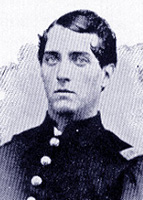 George Frank Robie (1844-91) was a Sergeant in Company D of the Seventh New Hampshire Volunteer Infantry, who won the Medal of Honor “for gallantry on skirmish line” during fighting around Richmond, Virginia in September 1864.
George Frank Robie (1844-91) was a Sergeant in Company D of the Seventh New Hampshire Volunteer Infantry, who won the Medal of Honor “for gallantry on skirmish line” during fighting around Richmond, Virginia in September 1864.
Robie originally enrolled in the Eighth Massachusetts Militia, a three-month unit, the day after the surrender of Fort Sumter in 1861. His service record gives his age at enlistment as 18, but other sources suggest he was a year younger. After being discharged, he enlisted in the Seventh New Hampshire in September 1861 as a Sergeant. He re-enlisted in the regiment in February 1864, and was appointed First Lieutenant in October. Although Robie was recommended for a medal during the war, his Medal of Honor, like many, was not actually awarded until June 1883 by resolution of Congress.
He moved to Galveston after the war, working as a clerk in a railroad office, but suffered from rheumatism that had first afflicted him during his service in Virginia. Robie returned to New England, and in 1884 was awarded a pension for disability. Robie subsequently returned to Galveston, dying here in 1891. To my knowledge, Robie is the only Civil War Medal of Honor winner interred in Galveston County. The Fitts Museum in Candia, New Hampshire, where Robie was born, holds Robie’s sword in its collection.
____


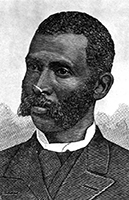 Josiah Haynes Armstrong (1842-98) was a Sergeant in the Third U.S. Colored Infantry. He was born free in Lancaster County, Pennsylvania, enlisted as a Corporal on June 26, 1863 at Philadelphia, and soon thereafter was promoted to Sergeant. The Third U.S.C.I. spent the latter part of the war in the Jacksonville, Florida, area, although Armstrong became ill and was transferred to a military hospital in St. Augustine. Some time later, his company commander, who had heard that Armstrong was convalescent and working at the hospital as a cook, wrote to request that he be sent back to the regiment, as he would “be obliged to make another Sergt in [Armstrong’s] place, which, as he is an excellent non-com officer, I am loathe to do.”
Josiah Haynes Armstrong (1842-98) was a Sergeant in the Third U.S. Colored Infantry. He was born free in Lancaster County, Pennsylvania, enlisted as a Corporal on June 26, 1863 at Philadelphia, and soon thereafter was promoted to Sergeant. The Third U.S.C.I. spent the latter part of the war in the Jacksonville, Florida, area, although Armstrong became ill and was transferred to a military hospital in St. Augustine. Some time later, his company commander, who had heard that Armstrong was convalescent and working at the hospital as a cook, wrote to request that he be sent back to the regiment, as he would “be obliged to make another Sergt in [Armstrong’s] place, which, as he is an excellent non-com officer, I am loathe to do.”
After his discharge, Armstrong remained in Florida, where he became a member of the clergy in the African Methodist Episcopal Church. He also served in the Florida State House of Representatives, representing Columbia County, in 1871, 1872, and 1875. He moved to Galveston in 1880, where he was pastor of Reedy A.M.E. Chapel here. Armstrong also served as Grand Master of the Prince Hall Grand Lodge of Texas, the African American branch of American freemasonry, from 1890 to 1892. He was ordained a Bishop in the A.M.E. Church in 1896, two years before his death at age 56.
_____
Anderson photo courtesy Col. Anderson’s great-grandson, Dale Anderson, and Bruce S. Allardice.




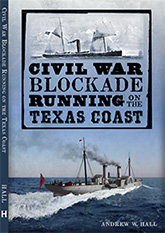
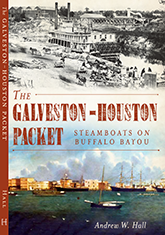
Huzzah!
Thanks for posting, Andy. These are four very interesting stories.
One point, which is a pet peeve of mine: Armstrong should be identified as having served with 3rd United States Colored Infantry (USCI). Since there were colored artillery (USCA) and colored cavalry (USCC) regiments, USCT should only be used to denote all colored regiments collectively. The oldest government tombstones make this distinction and use UCSI for colored infantry regiments. Over the years thie terminology for African American regiments, IMHO, has become sloppy.
Noted, and corrected.
Thanks, Andy.
Speaking of being sloppy, I said four stories instead of three and transposed letters in USCI in one instance. I guess my critical eye should be cast inward on occasion. 😉
The CSR at the US Department of Veterans Affairs insisted that the headstone will read, “US CLD TRPS'”
Dear Mr. Hall, I ordered and installed the headstones for Robie and Armstrong over 20 years ago. Here’s a link to the Facebook site for Camp Groce CSA. Big things are about to happen there. I post something toit everyday. Just read the “About” section for the big picture. https://www.facebook.com/dlisarelli/ REMEMBER CAMP GROCE! Sgt. 1st Class Danial F. Lisarelli, USARVeteran Operations Enduring & Iraqi FreedomFriends of Camp Groce–A Non-profit Organization
Date: Sat, 28 May 2016 17:58:52 +0000 To: dlisarelli@hotmail.com
Thanks for the comment. Yes, I recall your central involvement in those efforts. It was a great service to both those mens’ memory, and to the larger community.
Back in January you left a comment on U.S. Navy sailors put to labor in Texas. I didn’t post it because that’s research that needs to be published in a more formal venue. I hope you will pursue that.
They were US Navy Sailors of African descent who were captured alongside their white shipmates at the battles of Galveston, Sabine Pass I and II, and Calcasieu Pass, La. They were assigned to the Confederate Army’s Negro Labor Bureau and forced to work alongside southern slaves in fortifications and other CS projects. Some refused to work, being freedmen from the North, and they ended up in jail. Others were selected by CS officers to be their servants and/or office boys, and 4 of them escaped to blockading US Navy vessels at Sabine Pass and Galveston, respectively. Most, however, would not see freedom until the end of the war in Texas, June 19, 1865. Follow Camp Groce CSA at: https://www.facebook.com/dlisarelli.
Needs to be published in a more formal venue. That’s good stuff.
Andy: Love this stuff. John Banks
Excellent Memorial Day post, Andy. Well done.
Thanks.
Nice post. I wish I had visited this cemetery when my dad owned his cottage in Gilchrist.
I’ll give you a tour when you’re down this way. Lot of interesting bones there.
Andy, I’d like that very much. I’ll let you know if I’m in the vicinity. And btw if you’re ever in New York City during the Governors Island season, I’d be happy to show you around. Among MANY other things Winfield Scott Hancock arranged Grant’s funeral from his headquarters there, before dying himself the following winter in the commanding officers house.
Deal.
Please put me on the list of people who would like to take you out to dinner if you swing by NYC.